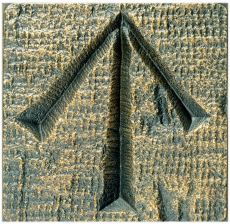Visiting the Convict Trail
The Road Today
There are still many places today where well-preserved sections of the original Road can be seen.
- The 43 km section immediately north of Wisemans Ferry goes through very steep and rugged country, providing a major challenge to the early nineteenth century road-builders.
- Devines Hill, beginning 500m west of the Wisemans Ferry landing on the northern side of the Hawkesbury River, contains particularly fine examples of high walling with massive buttresses, drainage systems and quarries. An easy one hour walk will reveal the wonders of this engineering feat.
- Other fine examples of stone work along the route are Clares Bridge, near Ten Mile Hollow, and the Circuit Flat Bridge, near Mt Manning. These are all preserved within Dharug and Yengo National Parks and can be explored on foot, by mountain bike, or by horse (except on Devines Hill). This section of the Road is closed to vehicular access to protect the remaining convict road works and allow for their conservation.
- Some sections of the convict work on Great North Road can be seen as you drive along the Road: the descent into Wisemans Ferry from the south; the Bucketty Wall at Mt McQuoid, which is at the intersection of George Downes Drive and the road from St Albans; Ramsays Leap and the Murrays Run Culvert between Bucketty and Laguna.
How to see the road
- Follow the road as an alternative route between Sydney and the Hunter Valley for travellers today
- Look for convict relics, 19th century buildings and landscapes
- Scenic drives, leisurely walks, cycle tours
- Visit towns and villages with traditional hospitality
- Cross the Hawkesbury River by vehicular ferry
- Complete self-guide tours, walks and cycling trips
Follow the Convict Trail signs and use the free e-Brochures to explore the Great North Road. This road was built by convict labour often working in irons between the years 1826 and 1836. It was built to connect Sydney with Newcastle and the Upper Hunter Valley in NSW Australia.
Extending north from Sydney to the Hunter Valley, the Convict Trail follows the route of the 240 km Great North Road. Most of this road continues to be used today, offering an alternative, slower paced scenic route between Sydney and the Hunter, where one can explore the brilliant engineering works created by hundreds of convicts.
Relics such as dry-stone retaining walls, wharves, culverts, dry-stone bridges and buttresses can still be seen along the entire length of the road – in Sydney suburbs like Epping and Gladesville, at Wisemans Ferry or Wollombi, Bucketty and Broke, or when walking in the Dharug and Yengo National Parks.
The free e-Brochures are supplemented by a glossy, full colour, self-guided tour booklet with maps. This booklet is available from the Convict Trail Project for $10.00 posted (within Australia) or from several tourist information centres or local libraries.

